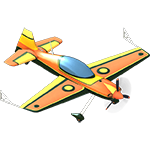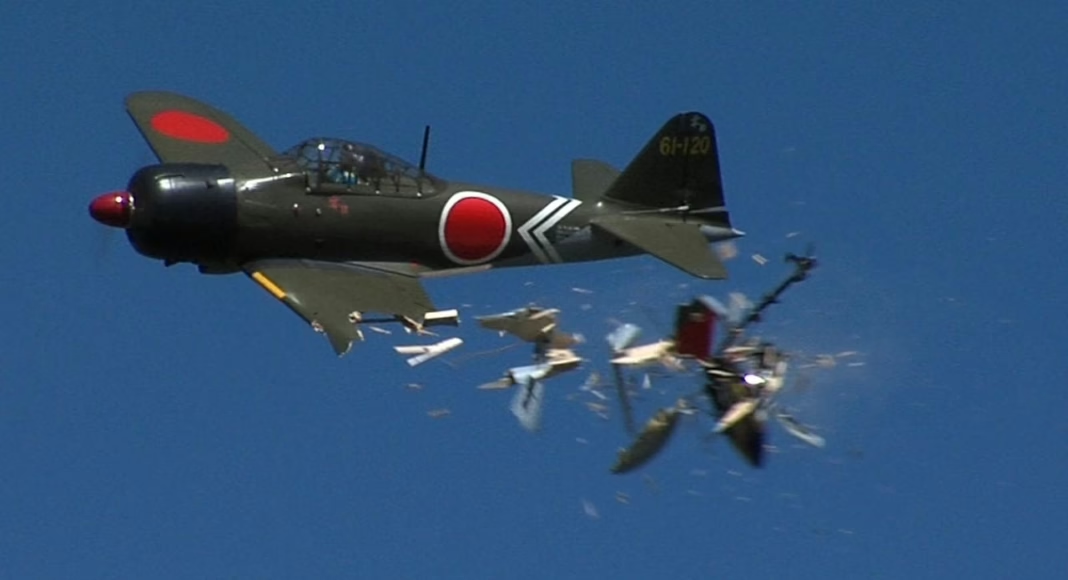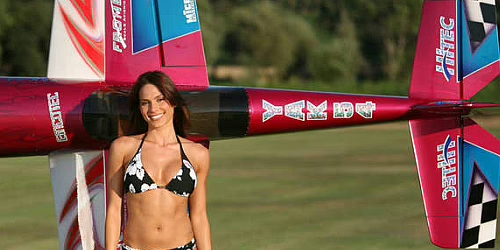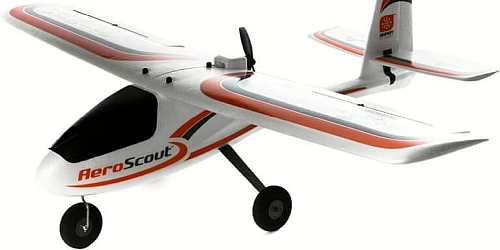Flying an RC plane can be a thrilling and rewarding hobby, but it’s not without its challenges, especially for beginners. If you’re new to the hobby, you might be wondering how to get started and what the best RC planes are. In this blog post, we will discuss five common mistakes made by beginners when they start learning how to fly RC planes and provide tips to help both beginners and experienced RC pilots avoid these pitfalls.
1. Not understanding the concept of center of gravity
Importance of Stability for Beginners
When they start flying RC planes, beginners often struggle with understanding the center of gravity (COG). The center of gravity plays a crucial role in the stability and maneuverability of an aircraft. If you are a beginner, stability is more important than maneuverability to ensure easier control of the aircraft during flight.
Tips to Achieve the Right COG (25% of the Chord)
To achieve the right COG, you should aim to position the aircraft’s center of gravity slightly forward, approximately 25% of the chord. This will help ensure that the aircraft is not too maneuverable and will maintain a stable flight path. However, it is essential not to make the COG too far forward, as this can cause the aircraft to nose-dive.
Experiment with Paper Airplanes to Understand the Effects of COG
If you’re skeptical about the importance of the center of gravity, try experimenting with a paper airplane. Attach a paperclip to the airplane’s nose and adjust its position to see how it affects the flight. You’ll notice that if the center of gravity is not properly balanced, the airplane will not fly straight, and it may stall. If the COG is slightly forward, the airplane will fly with a more stable trajectory, which is what you should aim for as a beginner.
Remember that understanding the concept of the center of gravity and its effects on stability is crucial for beginners in aeromodelling. By ensuring the right COG, you’ll be on your way to mastering the art of controlling and flying your aircraft successfully.
2. Not knowing what to do once the plane is in the air
A common mistake made by beginners in aeromodelling is not having a plan for when their model aircraft is in the air. Being prepared and having a mental map of what you need to do once the plane is airborne is crucial to fly a model aircraft successfully.
Importance of preparation and practice
Preparing for a flight involves understanding the basics of flying, practicing on a simulator, and clearly knowing what you should do once the plane is in the air. This is important because in real flight situations, the environment can be different from that of a simulator, with factors such as wind and visual perception affecting the flight. Without proper preparation, you might panic, overreact, and end up crashing your aircraft.
Use a simulator to familiarize yourself with flying patterns and techniques
Using a simulator is an excellent way to get acquainted with the flying patterns and techniques needed to control a model aircraft. You do not need an expensive simulator; even an affordable one can help you practice and create a program to follow during your actual flight. For instance, spending a week or ten days practicing circuits can help you become familiar with the process and know exactly what to do once your aircraft is in the air.
Develop a mental map of your flight plan to avoid surprises
Creating a mental map of your flight plan is crucial to ensure you are prepared for each stage of the flight. Start by practicing circuits, then move on to practicing without the engine, so you can learn how to react if the engine fails during your flight. Understanding what you need to do at each stage of the flight, including landing, will help you avoid surprises and panic during the actual flight. Being prepared will allow you to react appropriately to any issues that may arise, saving your aircraft and preventing crashes.
In conclusion, having a plan for when your model aircraft is in the air is essential to aeromodelling. Using a simulator to practice flying patterns and techniques, and developing a mental map of your flight plan can help you avoid surprises and improve your overall flying experience.
3. Starting with an inappropriate plane
When it comes to getting started in RC plane modeling, many beginners make the mistake of choosing a plane that’s either too small or too complex for their skill level. In this section, we’ll discuss the importance of selecting the right plane for your experience and environment and the ideal plane size for beginners.
Avoiding too small or too complex planes for beginners
A common mistake among beginners is choosing a too small plane, often with a wingspan between 60 to 80 centimeters. Although these planes might be more affordable or appear less intimidating, their small size makes them harder to control and easier to lose sight of during flight. This can be especially challenging for those who are learning to fly without the assistance of an experienced pilot.
It’s also not advisable for beginners to start with a scale model of a complex aircraft, such as a P-51 Mustang or a jet. These planes can have higher stall speeds and may require more advanced piloting skills to handle properly. Attempting to learn with such a plane can lead to crashes, discouragement, and an overall negative experience for the beginner.
Ideal plane size for beginners: around 1.5 meters wingspan
Experienced pilots often recommend a plane with a wingspan of around 1.5 meters for beginners. This size balances stability and maneuverability, making it easier for novices to control and understand flight dynamics. Whether you’re starting with a glider or a powered plane, choosing one with a 1.5-meter wingspan can help ensure a smoother learning experience.
In some cases, indoor flying with “slow flyers” (small planes designed to fly at low speeds) can be an appropriate option for beginners. However, for the majority of outdoor flights, a plane with a 1.5-meter wingspan is generally more suitable.
Importance of choosing the right plane for your skill level and environment
Selecting the right plane for your skill level and the environment in which you’ll be flying is crucial for a successful and enjoyable experience. A plane that is too small or complex can lead to crashes, frustration, and a lack of progress in your piloting skills. On the other hand, a plane that is well-suited to your abilities and the conditions in which you’ll be flying will allow you to gain confidence and grow as a pilot.
4. Ignoring the theory and refusing to learn
When starting RC plane flying, it’s crucial to understand the importance of basic concepts such as airspeed and stalling. Studying the theory behind flying, even without delving deep into mathematical formulas, is essential for grasping these concepts. A solid understanding of theory can help you identify errors and improve your skills as a pilot.
Importance of Understanding Basic Concepts
A common mistake beginners make is not grasping the concept of stalling. When flying an aircraft for the first time, it’s essential to ensure the aircraft’s center of gravity is slightly forward, making it stable and less responsive to control inputs. Stability is crucial for beginners, who should focus on learning to make minor adjustments to the aircraft’s trajectory.
Understanding basic concepts like airspeed and stalling will help prevent crashes, especially during takeoff and landing. Experimenting with paper airplanes and adjusting the center of gravity using paper clips can provide valuable insights into how the aircraft’s balance affects its flight characteristics.
Taking Time to Study Theory
Another common mistake is not preparing for what to do once the aircraft is in the air. Using a flight simulator can help you develop a mental map of your flight plan, such as practicing flying circuits and knowing what to do if the engine fails. Practicing these scenarios in a simulator helps you be prepared for real-life situations and reduces the risk of panicking or overreacting during a flight.
Theory helps in understanding errors and improving your skills
Having a basic understanding of theory also helps you discern whether an issue is due to a technical problem or a lack of experience. Being honest with yourself and recognizing when you’ve made a piloting error can help you improve and avoid making the same mistake in the future.
In summary, understanding basic concepts like airspeed and stalling is crucial for beginner pilots. Taking time to study the theory behind flying helps you better comprehend the principles of flight, which can lead to improved skills and fewer accidents. Being honest with yourself and learning from your mistakes will ultimately make you a better pilot.
5. Not being honest with yourself about your mistakes
It’s essential to be honest with yourself when you start flying RC planes, as it will help you grow and improve your skills. One common mistake beginners make is blaming technical issues for every crash. While technical problems can happen, it’s crucial to reflect on whether the problem was a human error or a technical fault.
Avoid blaming technical issues for every crash
When something goes wrong, such as crashing your aircraft, it’s easy to blame it on a technical issue like radio failure. However, if this keeps happening, it’s essential to consider whether it might be your lack of experience or knowledge causing the problem. If you’re not honest with yourself about your mistakes, you’ll miss out on valuable learning opportunities.
Reflect on whether the problem was human error or a technical fault
When an issue arises, take a moment to think about whether it was caused by a technical fault or human error. For example, if your aircraft stalls or crashes during a turn, it could be due to a lack of understanding of aerodynamics, incorrect control inputs, or overreacting to a situation. By reflecting on the cause of the problem, you can learn from your mistakes and work on improving your skills.
Learn from your mistakes and work on improving your skills
Once you’ve identified the cause of a problem, take the time to learn from it and work on improving your skills. This might involve spending more time on a simulator, studying aerodynamics theory, or practicing specific maneuvers to better understand how your aircraft responds in different situations. By being honest with yourself about your mistakes and taking the necessary steps to learn from them, you’ll become a better and more confident aeromodeller.
Conclusion
Understanding the basics of flying RC planes, practicing regularly, and choosing the right plane for your skill level are crucial factors in becoming a successful pilot. Having a strong foundation in theory and being honest with yourself about your abilities and limitations is important. Learning from mistakes, both technical and human, can lead to significant improvements in your piloting skills.
No pilot is immune to errors; even experienced pilots can benefit from revisiting these key points. It is essential to remain open to learning and adapting, as it will help you grow as a pilot and ensure a safer and more enjoyable flying experience. Remember that the journey of mastering RC plane flying is a continuous process that requires patience, dedication, and self-reflection. By following these guidelines, you will be well on your way to becoming a more competent and confident pilot.



 𝗵𝗼𝗯𝗯𝘆𝗶𝘀𝘁 Team
𝗵𝗼𝗯𝗯𝘆𝗶𝘀𝘁 Team
